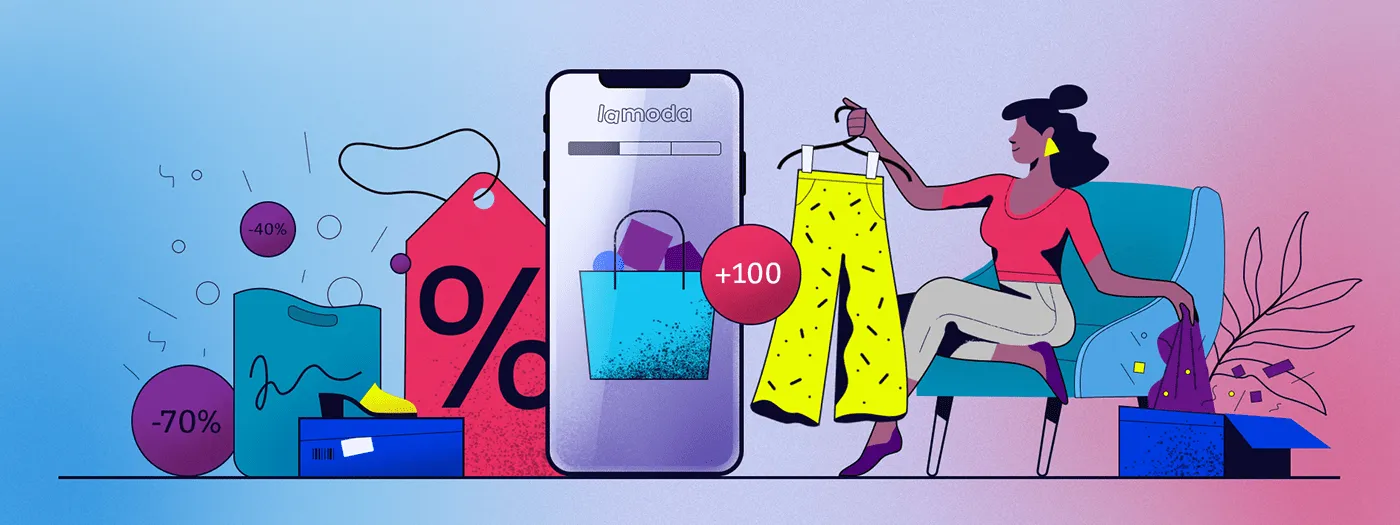Customer experience is undergoing tremendous changes right now. Due to the explosion of smart technology, the biggest amount of our customer habits have been already turned upside-down, and continue to implement changes.
A few years ago the only way to get a fancy outfit for your friend’s party was spending the whole weekend storming dozens of stores, usually situated in different parts of the city. Now you just need to open a smart app on your phone and order whatever you like. Don’t think you are the only one: 1,92 billion people opted for shopping online in 2019. The number is predicted to increase by 2,77 billion in 2025, making one out of four people in the world an active user of online shopping.
And it’s not surprising. The benefits we get from online shopping are obvious: we save our time, energy, get the ability to easily compare various brands, get a wide range of products at hand, and in case of getting a strong desire to buy a new pajama at midnight, there is no need to wait for store hours, you can immediately order it.
Though it might sound as if shopping online is giving a kiss of death to physical stores, it’s not exactly the truth. The advance of smart technology in the retail industry has been blurring the difference between online and offline shopping. Instead of cultivating one of the shopping channels, enterprises emerge into a complementary system that works to bring customer experience to the new level.
Smart retail stores are personalized stores
The survey held by Walker says that 86% of shoppers are eager to pay more for better and more personalized customer service. Meaning personalization they don’t differentiate between a store and a smart app, for example. Personalization is a complex — online and offline approach that aims at providing customers with a more satisfying shopping experience, and it starts with data collection.
Artificial intelligence
Ecommerce personalization becomes possible through processing large amounts of customers’ data. Through broad traffic segmentation, it’s possible to detect a channel of customers’ arrival — if they come from social media, email marketing, referral URL, etc; distinguishes visitors by country, language, weather condition, and currency; delimit customers from non-purchasers; analyzes which device the customer uses and much more. As soon as you have established the most significant segments, you decide on the content, you would like to share with each traffic segment. For example, you can make a currency switch or recommend products based on the weather conditions in the customers’ country (which is possible due to geo-location data analysis), address by name, and send short messages to registered users.
Though artificial intelligence has gone much further from detecting devices in use, location, age, and so on. It utilizes customers’ previous purchases, history of searches, top category pages, number of visits to the online store, and more. With every visit, AI platforms collect more and more data about individual customers that enables this smart technology to make more accurate and relevant recommendations. The choice of recommendation strategy belongs to the business owner, and it can get multiple faces like Arya in Game of Thrones. But the result of such profoundly selected recommendations is always the same — increasing the average order value.
Smart retailing is time and effort-saving
In today’s increasingly fast life pace, there is no time for suffering from disorientation during long shopping trips. Customers appreciate the convenience, around-the-clock shopping access, easy navigation, and their favorite stores being always at hand. Smart retailing moves beyond websites with responsive design, and enhances customers’ mobile experience with top-notch shopping apps.
Smart shopping app
First of all, a smart shopping app is a reflection of your store. It provides a cohesive insight into the personality of your brand, company culture, and makes a digital connection with your physical store (if you have one). Simple and precise design with discretely listed filters having no irrelevant buttons, no need to login amplifies user experience. Showing how fast and easy was their last checkout, a mobile app becomes a place to return more frequently. The research held by Criteo states that app users return to an online store twice more than website users.
The existence of your store icon on someone’s phone proves that the user has already started considering buying something from there. If not, he wouldn’t download it. This icon becomes a constant reminder that subconsciously pops up in the mind of a customer wherever he thinks of buying something.
The mobile experience is not only easy, fast, and accessible, the use of AI to boost the personalization moves to the next level with the app’s usage. Various loyalty programs, limited deals, special offers, ability to customize the application as to your customers’ preferences, 24/7 customer support, easy payment, and finally, push notifications. Sales, special offers, the arrival of some items that were missing last time when your customer searched for them — about all these and many other things you can inform through unobtrusive friendly push.
Smart retailing is alert
A week ago you were stalking a new Nike collection online. Once you have entered a shopping mall, the notification immediately appears on your screen “Nike new collection 20% off just for you”.
Beacon Technology
Introduced in 2013 by Apple, Beacon technology is now actively used by major retailers to supply the customers with the more correspondent online-to-in-store shopping experience.
By tracking in-store customer movement it sends targeted information about new arrivals, discounts, offers maps of large department stores, creates shopping lists with identification of the availability of the items, and their location in the store. One of the oldest US retail chains — Macy's has been using beacon technology since 2014. Recognizing the current location of the customer when they open Macy's application, it reminds them of the brands that have been recently liked if the items are in the makeup area.
Another bright example of this smart technology usage is improving conversion rates by sending smart ads. Finnish chain K-supermarket uses this approach to remind its customers about possible items they forgot to include in the shopping lists. For instance, you added coffee in the shopping list, and once you’re standing in the aisle with coffee, you receive a smart notification “Do you also need sugar?” The analytics of the chain of these supermarkets revealed in their research that 25% of their customers bought the product they sent a notification about.
Smart retailing is not only about the mobile experience
How innovative the technology wouldn’t become there is still demand for physical stores. It’s like in the case with books: reading online is always at your fingertips and you don’t have to bring a heavy book everywhere but you still enjoy the process of smelling the fresh print and turning pages.
Following the latest technological trends and turning your business into a tech-savvy competitor is a must if you want to stay tuned but it’s worth nothing if your physical store is poor and abandoned.
Some clients prefer checking out and touching the product offline, having a small talk with a friendly shop assistant, and having it wrapped in a beautiful eco-friendly bag. There is also another reality — when shoppers use stores as “showrooms” to see if they like the item or not and then order it online.
Whatever the option is the smart retail stores don’t steer away from shopping online or shopping offline. They lean into the pervasiveness of agile smart technology not neglecting careful maintenance of the physical stores.
Final words
We can’t make your point of sale more attractive with beautiful window cases, but we are eager to be your guide star in the world of smart retailing. Don’t hesitate to contact us.




_1764586939-small.webp)

